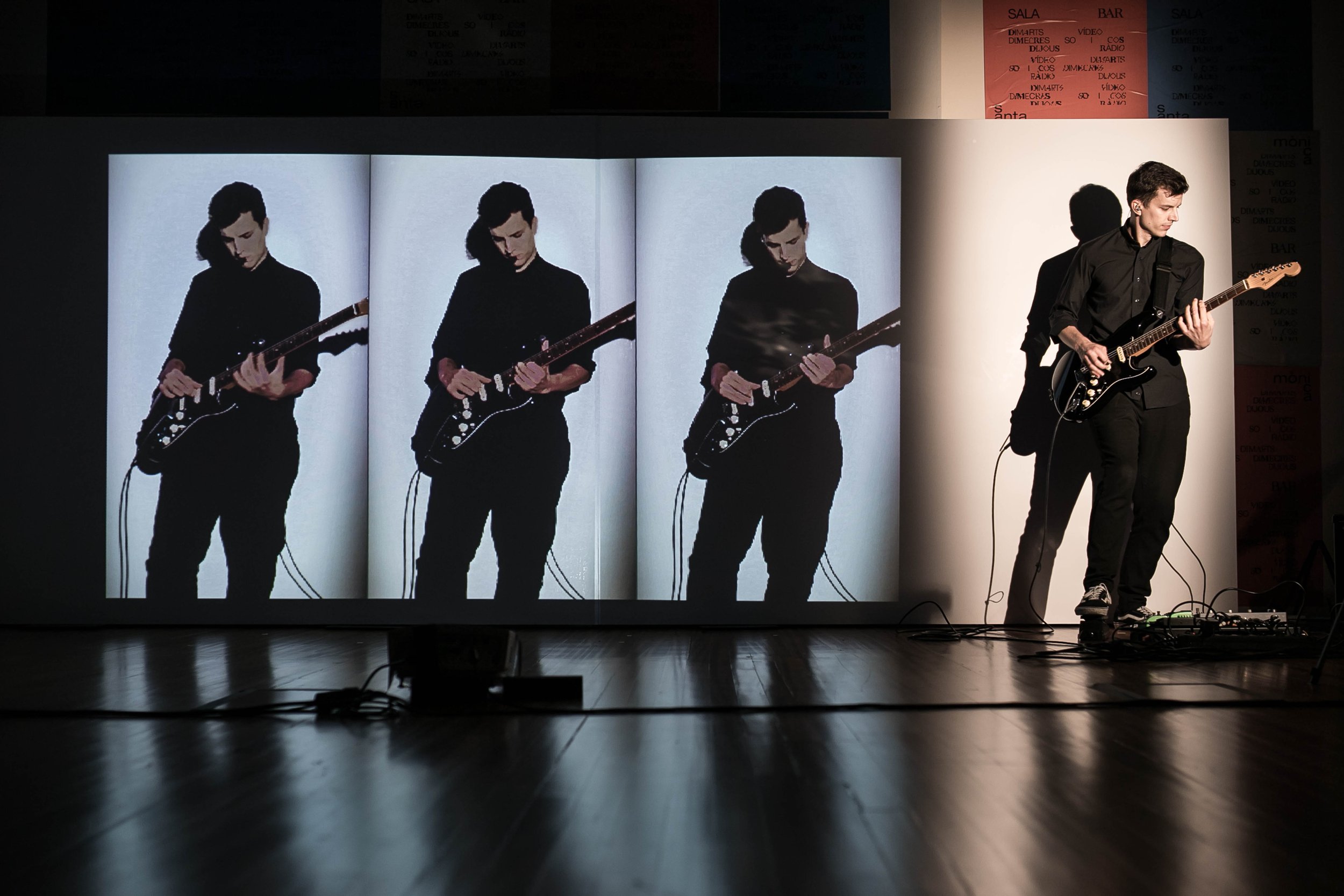The Spanish guitarist Álex Tentor offers this Thursday a concert of contemporary guitar at the Auditori de Barcelona.
The Spanish guitarist Álex Tentor (Madrid, 1993) is currently a guitar teacher at the Escuela Superior de Música de Cataluña in Barcelona. This Thursday he will give a concert at the Museu de la Música del Auditori de Catalunya with a programme made up of pieces written expressly for electric guitar by composers of various generations, starting with the American Morton Feldman, by whom he performs The possibility of a New Piece for Electric Guitar (1966), and continuing with the French Hugues Dufourt –La Cité des Saules (1997), Spanish premiere-, the Italians Pierluigi Billone –Sgorgo Y (2013), a work premiering in Spain- and Fausto Romitelli –Trash TV Trance (2002)- and the Spaniard Pablo Carrascosa Llopis (Valencia, 1979), artistic director of CrossingLines Ensemble, one of Spain’s leading contemporary ensembles, by whom he performs L5 in a world premiere. In a brief conversation on Instagram, Carrascosa explains that the idea for L5 was born between the two of them: “I studied classical guitar and played electric bass in a metal band, so the instrument is familiar to me. However, despite my music being heavily influenced by extreme metal and riff genres, I hadn’t dared to write for electric guitar. Although I didn’t write it thinking of him in particular in a direct way, because Alex is the kind of guitarist he is, I thought I could do this kind of piece with him and we worked a lot on the sound between the two of us, every detail of the very few elements that make up the piece”.
Tentor has commissioned and premiered works for electric guitar expressly created for him by composers such as Elena Rykova, Arturo Corrales, Bára Gísladóttir, Morgan Ågren, José María Sánchez Verdú, Jeeyoung Joo Diego Jiménez Tamame, Aleksandra Bajde, Guillermo Cobo and Avshalom Ariel among others.
Thursday’s programme will begin with La Cité des saules by Hugues Dufourt, one of the founders of the spectralist movement. The work, as described in the programme of the concert of 18 November 2023, which celebrated the 50th anniversary of the founding of the orchestra L’Itinéraire, created by the spectralist composers Tristan Murail and Roger Tessier, is “a metaphor for departure. The whole work is conceived as a form of reciprocal genesis of interiority and space. There is no motif, no outline, no figure emerging from a background. The only thing that matters is the process of spatialisation. The work is reduced to a process of emergence in which the only distinguishing features are the degrees of depth and openness. The articulations are reduced to a minimum: interstices, active voids, coloured zones, luminous events, games of transparency, dark murmurs. The work ends up folding in on itself, reabsorbing itself into its own background”.
The Possibility of a New Piece for Electric Guitar was composed in 1966 by Morton Feldman for his friend and fellow composer Christian Wolff, who premiered it that same year at a concert at the New York Library and Museum of the Performing Arts. Feldman described it as an attempt to write a piece for electric guitar that could “out-guitar” the instrument, using trial and error to produce sounds that did not sound like an electric guitar. The work was thought lost when Wolff’s score and guitar case were stolen a year later in 1967, but in 2007 a recording of Wolff playing the piece was found in the archives of Berkeley radio station KPFA. Tentor will play an abridged version.
Pierluigi Billone’s Sgorgo Y, at twenty-five minutes long, is the longest piece on the programme. Billone composed it for the Israeli guitarist Yaron Deutsch, artistic director of Ensemble Nikel. As can be read in the booklet of the album Sgorgo Y. n. oO published by Kairos in 2012, in a text written by Barbara Eckle, “Pierluigi Billone never wanted to write a piece for solo guitar, since, as the composer argues, ‘the guitar enjoys a higher status in genres outside the New Music’”. However, this is one of the three pieces in the triptych Sgorgo, in which, as Eckle states, “Billone gives the constant hum of the guitar amplifier a leading role by isolating the sound in extremely long fermatas. This draws the listener into a different, non-acoustic sonic reality. An acoustic instrument, which is often considered an extension of the body, has to be placed in relation to the space by the musician. The pianissimos seem close, small and intimate, the fortissimos large and massive. An amplified instrument, on the other hand, has the potential to transcend the limits of temporal perception. This potential of the electric guitar is part of Sgorgo’s key material.
The programme is completed with Trash TV Trance, one of the last compositions of the Italian saturationist composer Fausto Romitelli, who died of cancer at the age of 41. This is probably the most performed piece of contemporary music for electric guitar, along with Steve Reich’s Electric Counterpoint, despite the fact that it is also a highly complex, visionary and sonorous masterpiece, in which the performer is obliged to master a complex and extensive variety of instrumental techniques, such as the use of unusual objects, the coordination of complex mechanical gestures and even the indiscriminate abuse of effects and pedals.
